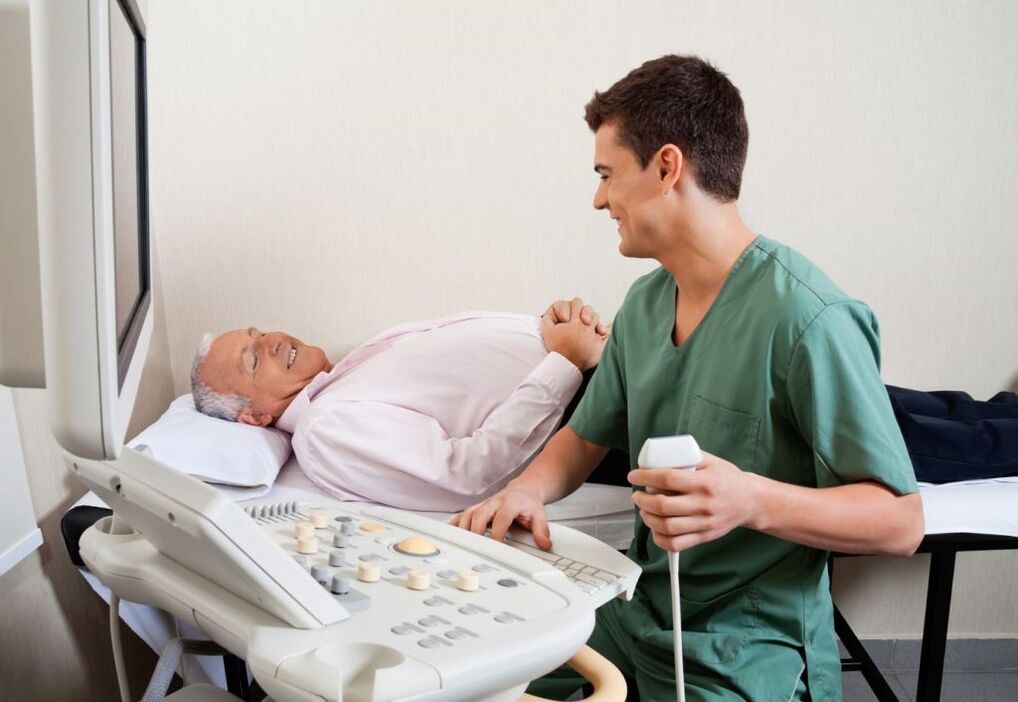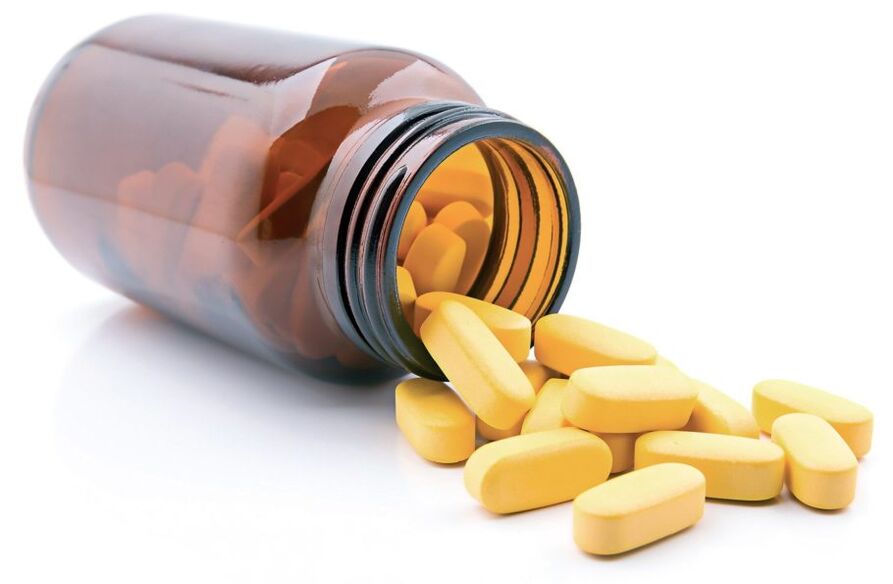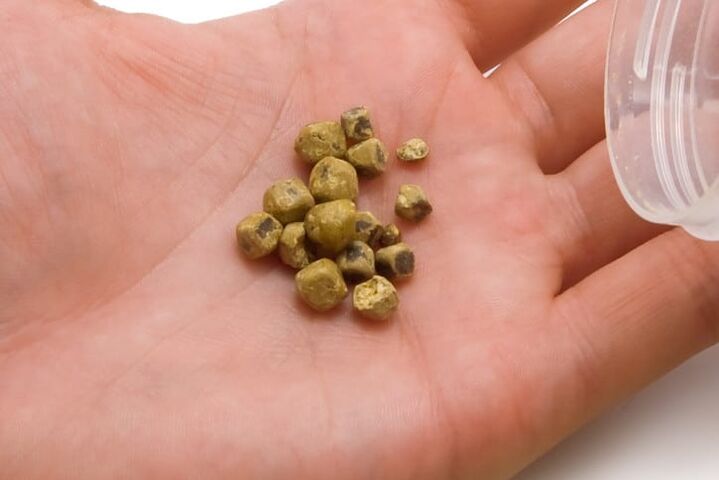One of the most dangerous "male" diseases is prostatitis - an acute inflammation of the prostate gland. The disorder is accompanied by discomfort during urination and can threaten infertility. Different types of prostatitis develop at different rates and require specific treatments. The disease has many serious complications that require prompt diagnosis. This will help to identify the specific condition and type of disease in time so that treatment can be started in the early stages of the disease.
form of disease, symptoms
The disease can occur in acute and chronic forms. Treatment is selected based on symptoms that characterize the pathological process. The acute and chronic forms have different signs and have many features. The acute form always precedes the chronic form, which progresses to more serious diseases such as adenomas and cancers.
Treatment of prostatitis at any stage of development has a good prognosis if there are no complications.
acute prostatitis
Prostate tissue is exposed to pathogenic microorganisms. Furthermore, the acute form develops due to damage to the organs by the fungus. Due to the inflammatory process, the balance of the microbial community is disturbed and immunity is reduced. As a result, inflammation of the prostate increases. Other causes of acute prostatitis include:
- Decreased or weakened immunity. Men with chronic genitourinary diseases and frequent colds are more likely than others to have prostate problems.
- Operational intervention. Any surgical procedure can lead to various diseases.
- Internal Organ Pathology. The presence of pathogenic microorganisms can cause the development of prostatitis.
- Hormonal exhaustion and increased estrogen production. The risk group included men aged 30-40.
- caries. Untreated dental disease is one of the most common causes of prostate disease. Bad teeth can cause bacteria to spread throughout the body and cause bacterial prostatitis.
Symptoms of acute prostatitis:
- severe pain in the muscles and lower back;
- delayed urination and frequent urges;
- Erectile Dysfunction.

The acute phase requires immediate treatment. The patient received medication and physical therapy.
important! At the first signs of illness, you should be seen by a doctor right away, which may sometimes require hospitalization. Upon examination, the details of the pathology are determined and treatment is prescribed. Self-medication can lead to conversion of the acute form to the chronic form and serious complications (abscesses in nearby tissues and thrombosis of blood vessels).
chronic prostatitis
The most dangerous and severe form of the disease. It is characterized by a "slow" process: signs of prostatitis usually do not appear in any way. All types of chronic prostatitis occur due to neglect of symptoms and lack of prompt treatment, and sometimes it can occur without an acute form. Other possible causes of chronic prostatitis include:
- Congestion of internal organs;
- Sedentary work, fatigue;
- decrease in immunity;
- malnutrition;
- bad habits;
- trauma;
- Infectious diseases of reproductive organs;
- pressure;
- low temperature.
Lack of treatment can lead to adenomas. The disease is usually asymptomatic, so men should get regular checkups, especially after 30 years.

Consequences of chronic prostatitis:
- urogenital dysfunction;
- burning pain in the groin;
- Decreased libido, lack of erection;
- General malaise, weakness.
Chronic prostatitis is treated on an outpatient basis, but sometimes patients may be hospitalized. Treatment includes comprehensive physical therapy, antibiotics, and a therapeutic diet. As an additional therapeutic measure, massage was prescribed and, in particularly neglected cases, surgery.
Classification
contagious
It is inflammation of the prostate caused by pathogenic flora. It can occur in acute and chronic forms. Mostly, it develops in the context of metastatic infectious and fungal diseases, such as influenza, rubella, chickenpox, herpes.

Factors affecting the development of bacterial prostatitis include smoking, drinking, decreased immunity, and SARS. Most of the time, this form occurs in patients between the ages of 20 and 40. Antibacterial and anti-inflammatory drugs are used for treatment.
germ
A rare form of prostatitis whose main cause is bacteria - Escherichia coli, Staphylococcus, Trichomonas, Chlamydia and Pseudomonas aeruginosa. Diagnosed by blood, urine and secretion tests. Symptoms correspond to the acute form.
The disease is caused by neurological disorders, smoking, alcoholism, stress, depression. Sometimes infections can occur during the postoperative period.
Treatment includes antibiotics and nonsteroidal drugs to reduce inflammation. Violation of the course of treatment can lead to the transformation of prostatitis into a chronic form.
fungus
The cause of the pathology is the ingestion of the prostate tissue by a fungus (Aspergillus or Candida). Fungal infections can occur due to hormonal changes and prolonged use of antibiotics and antimicrobials. It also occurs in the context of chronic diseases and weakened immunity. Treatment with folk methods and self-medication can lead to chronic forms and serious complications.

Sometimes it is asymptomatic, which makes timely diagnosis difficult. The latent form causes cancer cells to multiply. Diagnosed by biopsy. With fungal prostatitis, urogenital dysfunction, urethritis, cystitis, pain in the groin and pelvis, and fever occur.
stand still
It is a chronic type of non-infectious origin. The cause is congestion of the circulatory system in the pelvic area or stagnation of secretion from the prostate. It can occur in a latent form or with mild symptoms. Signs may include mild persistent pain in the genitals, groin, or pelvis, fever, and pain when urinating.
Sometimes it manifests in the form of a sexual disorder (loss of libido, lack of erection, liquefaction or sperm retention). For treatment, drugs that stimulate blood circulation, hormonal agents are used. Physical therapy exercises will also be effective.
Purulent
The most dangerous to the patient's health is the purulent type. It is characterized by discharge from the urethra and fever, indicating the presence of infection.

Stages and subtypes:
- Cataract.This subtype of prostatitis was isolated as a separate infectious disease. The difference is that there is no purulent discharge. All inflammatory processes take place only in the excretory ducts of the glands. The reason was complications from influenza, tonsillitis and SARS. It presents as a frequent urge to urinate with a weak, painful pain. The prognosis is good. Complicated treatment is often performed for concomitant diseases.
- follicles.The acute phase begins with an inflammatory process in the ducts and is the result of pathological manifestations in other organs. Symptoms are mild and usually invisible to patients. It can be triggered by infection or inflammation of the ENT organs, respiratory system, urinary tract, etc. It presents with acute pain, a sharp rise in body temperature, and late purulent discharge. With timely treatment, the prognosis is good. If the treatment process is not completed in time, the substantive phase can be entered.
- substance. This is one of the most difficult and dangerous stages. Purulent extends to all lobes of the prostate. In a subtype of the disease, the outflow of prostate secretions is disturbed and blocked with pus and mucus. Chronic forms are usually persistent. The patient had genitourinary dysfunction, decreased erection, and dissatisfaction with orgasm. Among the most common causes of suppurative prostatitis, gonococcal infection is notable. The treatment time is long, but it produces positive results. Self-medication can lead to life-threatening complications.
- abscess. This stage is the most dangerous and requires immediate treatment. Manifested as a prostate tissue abscess. It can lead to kidney failure, infertility, cystitis and sepsis. Complications can lead to death.

One of the main methods of treatment is to take antibiotics. In advanced cases, patients undergo surgery. Self-medication can cause death in patients.
Calculated
It is a complex form that presents with a longer course of disease. The reason is incorrect treatment or a complete lack of treatment. It is characterized by the formation of stony inclusions in glandular ducts. Endogenous stones can block the urethra, causing patients to experience severe pain during sex, walking, and urination.
It can lead to complications such as impotence and infertility. Treatment takes place in a hospital, and sometimes patients undergo surgery. Long-term lack of treatment can lead to prostate cancer, benign prostatic hyperplasia, and adenomas.

prevention
Preventive measures will help avoid the development of pathology and reduce the likelihood of infection. The simplest preventive measures are:
- normal sexual relations;
- personal hygiene;
- quit smoking and drinking;
- Wear comfortable cotton underwear;
- maintain immunity;
- proper nutrition;
- Low temperature protection.

At home, you can prevent the development of pathologies by performing simple physical exercises every day - bicycles, bridges, birch.
Allocating 10 minutes of physical education a day can cut your risk of prostatitis in half.
Simple exercises will also help improve well-being:
- Stand up straight and focus on one leg. Use the other leg to swing back and forth in large swings. 100 swings per leg are recommended.
- tilt. Stand with your feet shoulder-width apart, leaning alternately from side to side.
- During the day, try holding your breath several times for 10-15 seconds. Repeat the breathing exercise at least 5 times a day.
The treatment of prostatitis is a long and complicated process that will bring a lot of trouble. To protect the body from the development of this pathology, regular inspections and preventive measures should be taken.





























